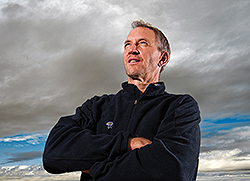January 30, 2013 • ALBUQUERQUE, N.M. — Rebutting a speculative hypothesis that comet explosions changed Earth’s climate sufficiently to end the Clovis culture in North America about 13,000 years ago, Sandia lead author Mark Boslough and researchers from 14 academic institutions assert that other explanations must be found for the apparent disappearance. “There’s no...
